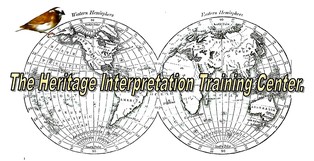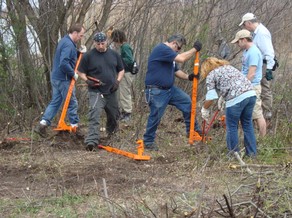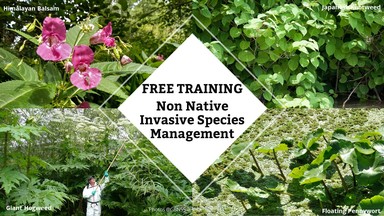John Veverka & Associates
Main menu
- Home Page
- Our Range of Services
- Separator 2
- Interpretive Coaching
- Interpretive Planning
- Interpretive Plan Outline
- Interpretive Training
- John Veverka Resume
- Qualifications
- NEW Advanced Interp. Text Book
- Separator 11
- InterpNEWS
- Separator 12
- Library
- Expert in Interpretation
- JVA NEWS, Courses and Updates
- Certificates
- Separator 47
- Planning/Design of Interpretive Panels
- Separator 48
- Interpretive Writing
- Separator 49
- Interpretive Writing Course
- Separator 50
- Interpretive Trails Course
- Separator 56
- Interpretive Panels Course
- Separator 55
- Introduction to Heritage Interpretation Course
- Separator 54
- Interpretive Planning & Design of Marketing Brochures Course
- Training for Interp. Trainers
- Separator 57
- Interpretive Exhibits Course
- Separator 58
- Interpretive Master Planning Course
- Separator 59
- Interpretive Planning for Scenic Byways.
- Critiquing and Coaching Interpretive Staff
- Separator 31
- Advanced Interpretive Planning
- Interpretive Training Center Course Catalogue
- Separator 32
- Interp. for International Visitors course.
- Separator 33
- Interpretive Exhibits Evaluation
- Separator 34
- Interp. Center Feasibility Analysis Course.
- Separator 35
- Interp. for Commercial Tour Providers
- Separator 36
- Interpretive Researchers Guide for Visitor Studies
- Separator 37
- Separator 13
- Interp. Planning for Historic Homes
- Separator 14
- Heritage Interpretation Training Center
- Interpretive Planning for Botanical Gardens
- Separator 15
- An introduction to planning and presenting live interpretive programs and tours for Museum/Heritage Site Docents and Volunteers.
- Developing Marketing Plans for Heritage & Tourism Sites and Attractions
- Separator 16
- Interpretation Book Store
- Separator 17
- Heritage Interpretation Resource Center
- Interpretive Planning for Historic Farms
- Developing Successful Partnerships
- Developing Interpretive Outreach Programs
- Community Interpretation Planning
- Interpreting Gravestones and Historic Cemeteries
- Using Interpretation to Accomplish Management Objectives.
- An Interpreters Guide for Survival Economics.
- Separator 18
- Innovative Strategies for Interpretive Media and Services Planning.
- Separator 19
- A Curators Guide for Developing Gallery Tours.
- Advanced Interpretive Writing - Technical Publications
- Page 2
- Advanced Interpretive Services for Managers, Supervisors, Team Leaders and Sr. Staff.
- Separator 20
- Advanced Interpretation for Chiefs of Interp. - Interpretive Managers - Regional Interp. Specialists
- Interpreting Critical Issues.
- Separator 21
- Developing Commercial Interpretation for Resorts, Cruise Ships, Campgrounds and Tourism Attractions.
- Separator 38
- Planning and developing a new commercial tour guiding business.
- Separator 39
- Interpretive Evaluation, Visitor Studies and Site Assessment Center
- Separator 40
- The Center for Interpretive Planning Advancement & Excellence.
- Developing Requests for Proposals (RFPs)
- Separator 41
- Planning and Facilitating Focus Workshops
- Separator 42
- InterpNEWS Advertising Details
- Planning for Interpretive Experiences
- 40 Years a Heritage Interpreter
- Separator 43
- Interpretive Techniques - The Rest of the Story Course
- Separator 44
- Certified Professional Interpretive Planner Certificate
- Certified Professional Interpretive Program
- Certified Professional Interpretive Trainer certificate program.
- Separator 53
- Certified Professional Heritage Interpreter certificate program.
- Separator 52
- Certified Professional Interpretive Writer certificate program.
- Visitor motives for attending interpretive programs.
- Separator 45
- Exhibit Rehab Course
- Separator 46
- Developing Training Workbooks & Manuals
- Separator 22
- Planning for Railroad Museums and Sites.
- Separator 51
- Climate Change Interpretation Course.
- Separator 23
- When there's nothing left but the story - interp. storytelling.
- Separator 24
- Interpreting Legends Myths and Fables
- Separator 25
- InterpSHARE - Seminars 2022
- Separator 26
- Interpreting Invasive Species
- Separator 27
- Interpretiing Edible Insects
- Separator 28
- Interpretaive Planning for Climate Change
- Separator 29
- HITC Climate Crisis Resource Center
- Separator 30
- Separator 5
- PUP Members Only
- Starting a new Interp Consulting Business
- Panels 4 Week Course
- Separator 8
- Interpretive Writing - 4 Week Course
- Marketing - 4 Week Course
- Separator 7
- Intro to Interpretation - 4 Week Course
- Separator 9
- Interp Climate Change - 4 Week Course
- Separator 10
- Exhibit Rehab 4-Week Course
- Separator 6
- Level 1
- Johns Interpreters Blog
- Separator 4
- Economics for Heritage Interpreters
Interpreting Invasive Species

Interpreting Invasive Species -
Identification, Prevention, Management
and Interpretive Media for Public Awareness.
As with all our courses you can start the course at any time and work through the course at your own speed. The course registration includes my textbook on interprtive planning and my new Invasive Species Resource Interpretation Issue.
I got interested in interpreting invasive species from working with many different clients in developing invasive species management interpretive programs and media, from interpreting zebra mussels for the Army Corps of Engineers for their lakes, to interpreting invasive plants and insects for many parks and nature centers. In doing the research for this course I was amazed at the huge number and diversity of invasive species, not just in North America but worldwide.
This course has several main topics to cover to help give you a better understanding of the diversity of invasive species -
1. What exactly is an invasive species?
2. Where do/can they come from?
3. Why were some invasive species originally brought here?
4. Identification of some of the most common invasives in North America.
5. Overview of invasive species -
6. How can we help prevent invasives from coming to our areas?
7. How do we manage and get rid of the ones we have?
8. How can we use interpretive media (panels, exhibits, brochures, web sites and live programs) to interpret invasive species issues to our visitors?
9. What can people do to help stop the spread of invasives?

Nine Units -
2 CEU Unit Credits.
Unit One -
So what's the difference between an introduced species and an "invasive species"?
Unit Two -
insects and sea life. And plants in your own back yard?
Unit Three -
either on purpose or accident. Any of those at your site or natural area -
Unit Four -
invasives you may have or know about. How can you identify these to your visitors to make them able to identify invasives they may see in the park, natural area or even in their own communities? Make your list of your invasives at your site.
Unit Five -
more.
invasives were you NOT aware of that may, in fact, affect your site or community?
What strategies can you think of to help visitors learn about some of these "surprises"?
Invaders? If you live in Florida you may find them in your backyard eating your dog?
Unit Six -
topic to your visitors, review and think about strategies (help from the readings) of
techniques to help prevent the spread of invasives from/to your site, to preventing the
introduction or spread of invasives to your visitors homes or communities. What is
your proposed (or in operation) prevention plan?
Unit Seven -
management of invasive "problems", from using volunteers to dig them out to use
of herbicides and other management removal (and prevention from re-
establishment) techniques. Also dealing with insects and invasive water plants and
aquatic animals. What's you agencies plan for invasive removals?
Unit Eight -
and live programs) to interpret invasive species issues to our visitors?
will look at the variety of interpretive media and services you can use to help
visitors learn about invasive species and your site/agencies management strategies
for preventing or removing invasives associated with your park or site. We will
look at developing an interpretive marketing/awareness strategy for your invasive
species management issues.
Unit Nine -
or regional community the ways people, families, commercial firms, local parks and
garden shops can do to help educate the visitors/customers about preventing the
spread of invasive plants and wildlife (from gardens to boaters and anglers to any
person involved with the prevention of invasives into their habitats or resources).
If you're interested in taking this important resorce management course, click on the Pay Now button below to pay the course tuition and we'll get you started.
Prof John Veverka
Course Developer and Coach.
jvainterp@aol.com
<form action="https://www.paypal.com/cgi-
<input type="hidden" name="cmd" value="_s-
<input type="hidden" name="hosted_button_id" value="89FXUQWNDNPWE">
<input type="image" src="https://www.paypalobjects.com/en_US/i/btn/btn_buynowCC_LG.gif" border="0" name="submit" alt="PayPal -
<img alt="" border="0" src="https://www.paypalobjects.com/en_US/i/scr/pixel.gif" width="1" height="1">
</form>